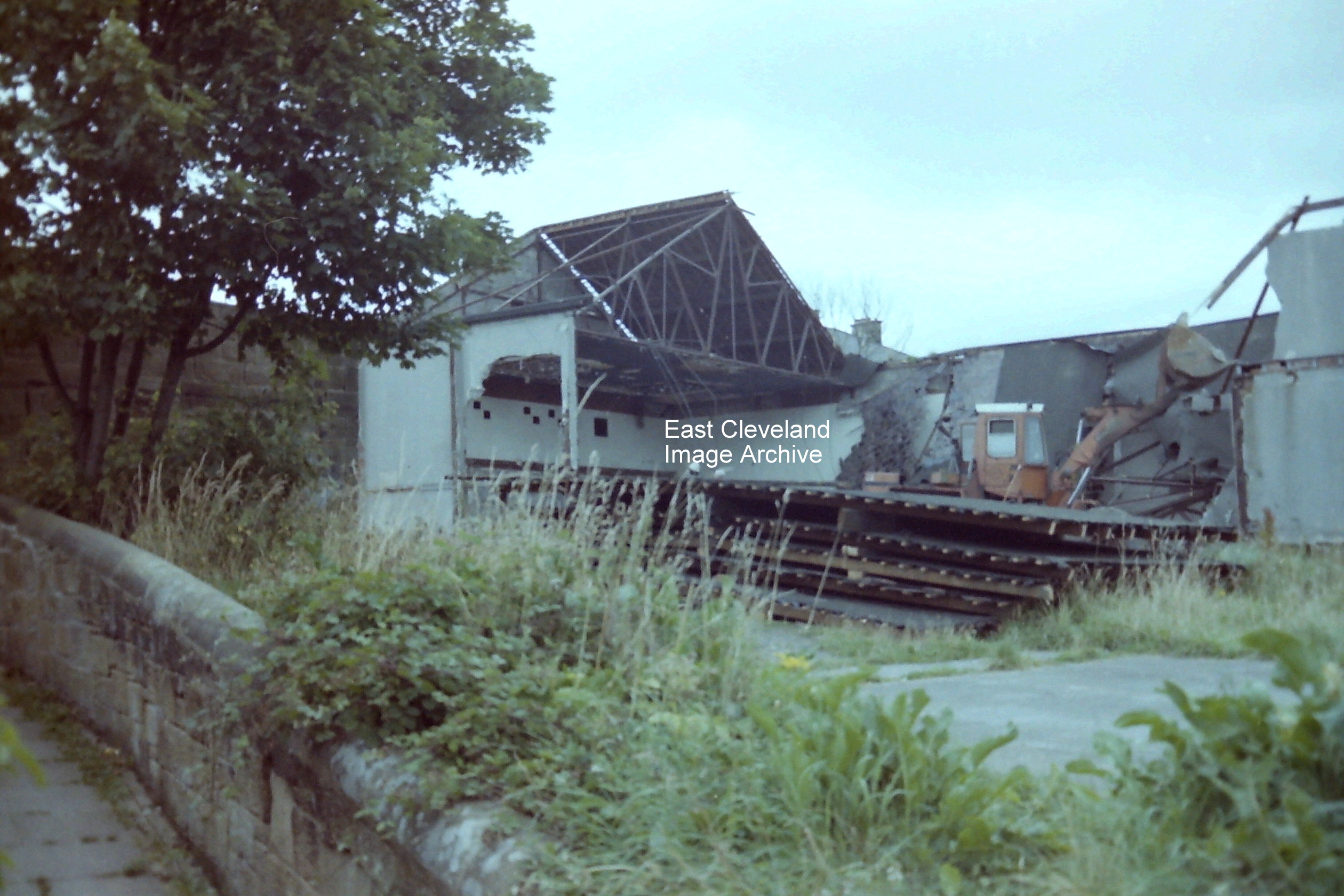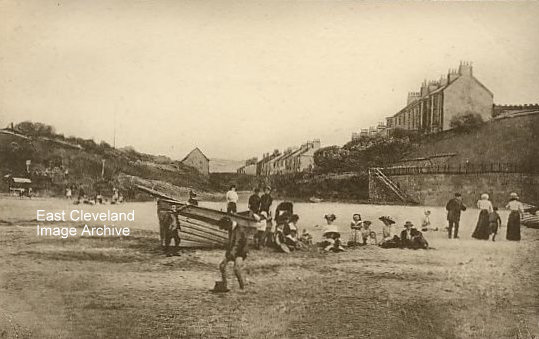
Another photograph of the demolition of the Regal Cinema in the Market Place, Loftus.
Image courtesy of Eric Johnson and thanks to Bryan Richardson for confirmation of the location.
|
|
||
|
Another photograph of the demolition of the Regal Cinema in the Market Place, Loftus. Image courtesy of Eric Johnson and thanks to Bryan Richardson for confirmation of the location.
Bryan Richardson rightly told us that the earlier pictures were of the Regal cinema in Loftus as it was being demolished. Terry Clarke tells us: “I wonder how many people knew there were two picture houses in Loftus this one as you can see; in the back ground was the Golden Lion. I remember it well, the first picture that was shown there was King Kong, also Bambi; when Bambi got shot I never cried but when King Kong finished I went blue murder!”  A very evocative image of old Marske. A group of Victorians taking the air while a fisherman digs for worms in the foreground. Still a very photogenic view to this day, largely unchanged except for the addition of a tractor or two. Maybe with the regeneration that is taking place in Marske we’ll see the old bandstand and gardens back again!
The new rail bridge with the concrete-work in place.
The new rail bridge starts to take shape on Carlin How bank, now the steel work is in place.
Despite it’s exotic title the Tivoli Theatre, Carlin How was actually a corrugated sheeting building; with it’s mock gothic windows bore a greater resemblance to a chapel or religious building. Remembered for its travelling shows and dandily dressed actors who performed there. The building was also used for balls, as well as auctions. It later burned down in a fire in December 1914, the fire was believed to have started in Biott’s fish and chip shop which stood at the other end of the Theatre. The Tivoli Theatre stood on what was commonly called the Common opposite but to the right of the school. The same area in later years was where the Air Raid shelters were built. The telephone box of more modern times would have been at the right hand end of the Tivoli looking from Carlin How Fisheries. The metal fencing in the image faced onto Kilton Lane, whilst the youngsters in the photograph would be looking across Muriel Street at the end of the Maynard Arms. Image courtesy of the Pem Holliday Collection and many thanks to Brian Jemson and Derick Pearson for updating information.
Meadow Dairy was on the High Street, next to the present day Post Office; previously a Tattoo Parlour and is now part of the ‘My Price’ food shop. In 1924 the Manager was Mr Joe Anderson and is shown flanked by two assistants, one of whom is known to be Miss Elsie Burton and an unknown assistant. Mr Anderson won prizes for window dressing and many of his displays were astonishing. Can anybody help in identification of the other young lady?
North Road (earlier called Lambs Lane) around 1900 – from a T.C. Booth of Loftus postcard – the date being assumed from the postmark which the card carries of August 1912. Adam Cuthbert asked: “What was the building that’s now the road to North Road car park and when did it get knocked down?” Eric Johnson tells us: ”Ally Watson’s dairy was in the building with Hodgson’s sign. Further up North Road was access between the parish hall and this building to Laurie Gibson’s butchers barn and slaughter-house. The bottom half of this building was used to store the stalls for the Market Place, the upper part being occupied as a house by a family called Lindsey. All were demolished along with the council yard for the car park. The house built out onto the road with the lancet window is Forge House, with the smithy next towards the parish hall. Ally Watson later used the smithy building for his dairy and milk round. The first shop on the left was Gibsons butchers. The shop opposite used to belong to Billy Clark, no relation, who played for Loftus Albion in the Northern League. Then Jim Kelly’s off-licence, his wife was a member of the Trillo (ice cream) family. Clarks shop next to the butchers was formerly Cyril Whitlock’s grocers.” Can anybody assist with dating this alteration? Image courtesy of Jean Hall and thanks to Eric Johnson for the updates.
The caption on this postcard view says ”Old Congregational Church, Loftus”, the plaque between the windows says ”Ebenezer Chapel”, so they were both right. Built in 1827 in North Road (then called Lambs Lane), it accommodated 180 people and over the doorway was an inscription ”Si deus a nobis est qui contra nos?” which in English means ’If God is with us who shall be against us?’ The church was replaced in 1906 by the church built on the former monumental mason’s yard at the corner of West Road and Westfield Terrace to accommodate more people; the ”Ebenezer” when disused later became the Parish Hall. Now refurbished as a private property and currently up for sale, this fine old building looks as austere now as it did then. The obligatory group of onlookers makes this picture, don’t you think? Can anybody explain why it looks like a building of two halves, with each half a mirror image of the other? Image courtesy of Ann Wedgewood & Keith Bowers, information courtesy of Jean Wiggins.
Number 2 East Street, was badly affected by the subsidence. The doors jammed and the occupants couldn’t get out. The nightwatchman’s hut was in the yard of number 2 in this photograph. He was on duty because of the coal gas in the mains and had to go round at night testing for gas and for water leaks. Numbers 2 and 3 East Street had to be demolished because of the damage. Image and information courtesy of Eric Johnson. |
||
Recent Comments